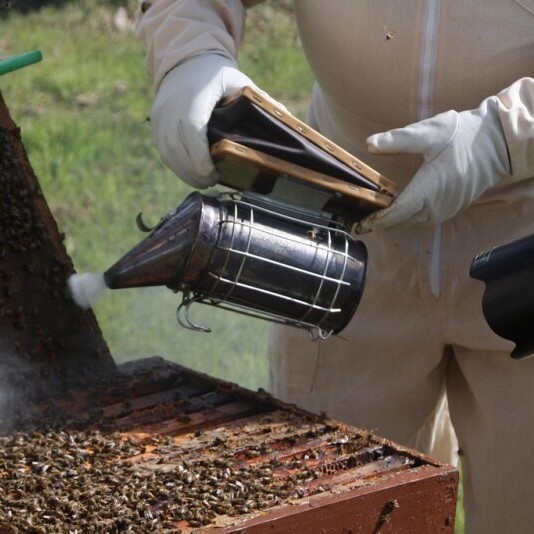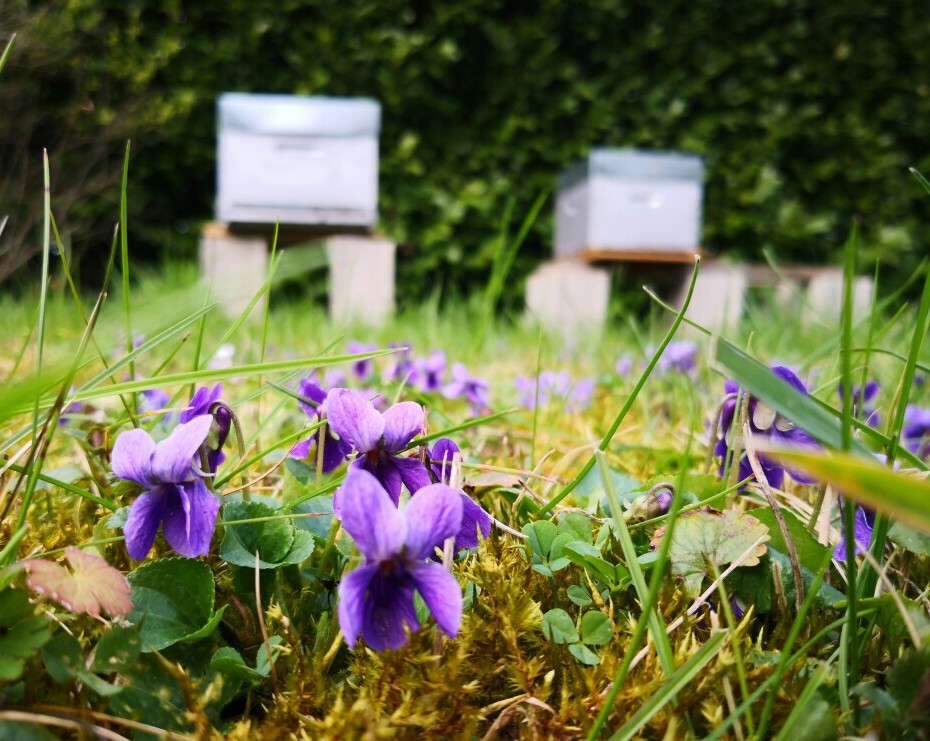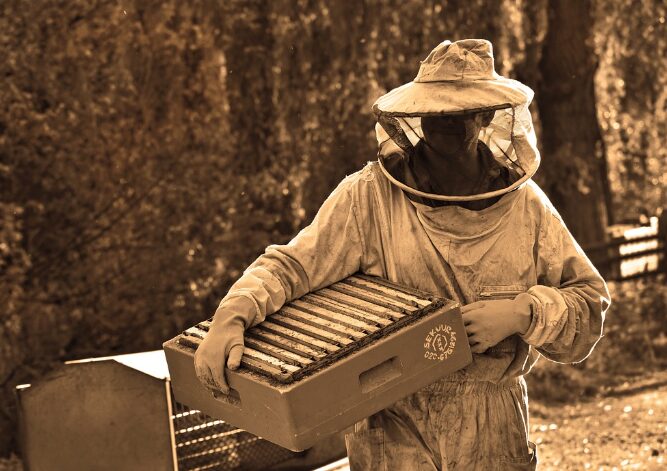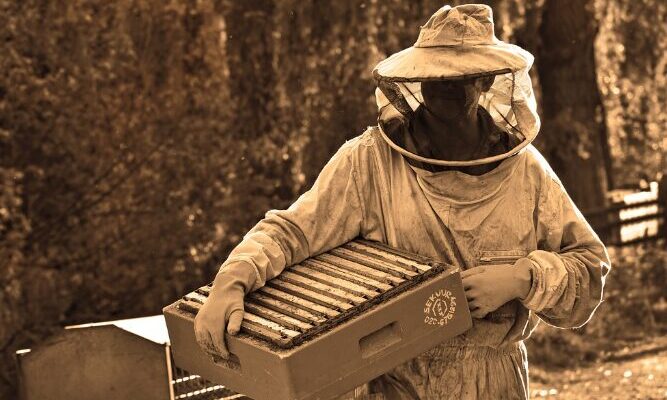Beekeeping often gets tagged as a dangerous pastime, but let’s break down what really makes people wary and why beginners shouldn’t be scared off easily. Common fears often include bee stings and managing swarms, but when you look closer, you see these risks are often exaggerated. In reality, beekeeping is a lot safer than you might think when approached with a bit of knowledge and the right precautions.
Imagine starting any new hobby and the initial challenge that might come with it. Beekeeping’s pretty much the same. It’s all about learning and adapting. Once you’ve got the record straight, a little training can go a long way, and for most folks, it’s no longer about “if” a sting might happen but how rare it becomes.
Modern beekeeping equipment has revolutionized how we interact with bees. Pro suits, gloves, and veils are there to make your beekeeping venture not just safe but comfortable as well. These modern innovations mean you’re well-protected, allowing you to focus more on the fun and less on the fear.
Safety protocols are the bee’s knees, quite literally! Seasoned beekeepers have all sorts of neat tricks up their sleeves (figuratively, of course, since they’re suited up!). Listening and learning from them is crucial. From choosing the right location for your hives to ensuring you approach your bees calmly and confidently, these insights can power up your beekeeping safety strategy.
I chatted with a few experienced beekeepers, and they had some serious wisdom to share. They talked about the importance of understanding bee behavior, the key role of regular hive checks, and the benefits of continuous education in keeping risks minimal. It’s like having a trusty guide on your side right from the start.
Getting Started- Essential Gear and Safe Practices for Beginner Beekeepers
Starting off in beekeeping can feel a bit like gearing up for a new adventure. One of the first steps is knowing what equipment you’ll need to keep yourself safe while also enjoying the experience. So, what’s the starter pack look like? The essentials include a beekeeping jacket, gloves, a veil, and a smoker. Each piece plays a big part in keeping you protected from those little buzzing buddies while you learn the ropes.
Picking the right gear isn’t just about safety—it’s about comfort too. A beekeeping jacket should be well-fitted to avoid any bee mishaps, and gloves should allow you enough dexterity without making you feel like you’re balancing on a tightrope. New beekeepers often feel invincible with all this gear, but remember, gear works best when handled with care.

Sourcing bees safely is another puzzle piece in this journey. Before getting started, ensure you’re buying from reputable sources. These sellers often provide bees bred for gentleness, which can be a huge confidence booster for beginners. It’s also a good idea to check local laws or regulations about beekeeping to avoid any unexpected visits from neighbors or officials.
One of the coolest tools in your kit is the smoker. It’s not just for show; it plays a crucial role in calming the bees, making hive inspections smoother. Ensure you know how to use one efficiently without causing smoke mayhem. The online world is rich with tutorials that can help you master this skill, turning it into a seamless part of your beekeeping routine.
The Bee Environment- Making Your Beekeeping Experience Safer
Understanding the ins and outs of bee behavior is like unlocking a secret language. Bees are complex creatures, and knowing how they tick can make your interactions way smoother and safer. Observational skills are key here; watching bees and their natural patterns helps reduce misunderstandings and might even prevent the odd sting.
Designing a safe apiary is all about location, location, location. You want a spot that’s less trafficked by curious pets or kids but still allows easy access for you. Natural barriers such as hedges or fences can also provide shelter from winds or curious neighbors. Remember, creating a safe environment extends to your bees’ comfort too—shade and water access can prevent stress for both you and them.

Experts often highlight common newbie mistakes that can be easily sidestepped. Adequate space between hives promotes easy access for management. Ensuring a clear flight path for bees is another aspect. It not only keeps human traffic away but also helps bees return to their hive without confusion or interference.
Routine hive inspections are your golden ticket to maintaining a healthy colony. This practice helps you spot potential problems before they escalate. Look for irregularities in bee behavior or hive conditions, such as decreased activity or damaged combs, to catch issues early.
Creating a safe setting is about forethought and careful planning. This kind of preparation doesn’t just increase your safety—it enhances the overall beekeeping experience by keeping it stress-free and enjoyable. With these insights under your wing, you’re well on your way to running a smooth and harmonious apiary.
Training and Education- Why Informed Beekeepers Thrive
A little knowledge goes a long way in beekeeping. Taking advantage of online resources and courses can drastically improve your competence and confidence. Many platforms offer beginner-friendly courses, complete with videos and a step-by-step approach to help you grasp the basics and beyond. With a structured learning path, every task from hive inspections to honey extraction becomes much easier to manage.
Catching up with seasoned trainers can give you insights into the skills that boost your beekeeping journey. Essential skills include understanding bee life cycles, reading their behavior accurately, and practical hands-on management of your hives. Trainers often emphasize the importance of seasonal awareness—knowing what bees need as temperatures and conditions change through the year.

Joining local beekeeping clubs opens up a community of support. These groups are full of fellow enthusiasts who are often willing to share tips and experiences. There’s also heaps of opportunities for mentorship, where experienced keepers can guide you through your early challenges. It’s like having a buddy system where you learn from both personal experiences and shared wisdom.
Hearing real success stories from other beginners can be inspiring. Many have transformed their initial fear into excitement through dedicated learning and community involvement. Starting small, they’ve managed challenges, grown more confident, and now delight in their thriving hives. Sharing these stories creates a positive loop of learning and encouragement.
Education is empowering, offering you tools to make sound decisions and enjoy the beekeeping journey without unnecessary surprises. With this knowledge, facing the unknown becomes an exciting opportunity—not a daunting hurdle.
Embracing the Joy and Benefits of Beekeeping
There’s something truly rewarding about stepping into the world of beekeeping, and it’s a journey filled with unexpected joys beyond the initial fears. Many first-timers quickly discover a newfound emotional connection with nature that’s both calming and inspiring. This connection often turns into a fulfilling hobby that doesn’t just enrich their lives but also supports the ecosystem.
Beekeeping comes with a bunch of health perks too. Spending time outdoors in a mindful and focused manner can improve mental well-being, reduce stress, and even boost your mood. Plus, managing hives keeps you physically active, engaging muscles you might not use in your usual daily routines.
The impact goes beyond personal benefits; keeping bees can be great for your community too. Pollinators like bees are essential for the environment, and having a bee colony in your neighborhood can substantially enhance local biodiversity. You’re contributing to a healthier planet—with a side bonus of possibly sharing some delicious home-produced honey with your friends and family.

Future-forward methods are also making beekeeping more accessible. Technology continues to introduce novice-friendly tools that simplify the experience. From smart hive monitors to sustainable beekeeping practices, innovations make it easier than ever for beginners to kickstart their beekeeping dreams without the usual steep learning curve.
There’s a whole world buzzing with opportunities once you get into beekeeping. The initial apprehensions fade as you’re swept up in the joys and adventures it brings. Embrace the journey with an open mind, and you’ll find that the myth of it being too dangerous quickly dissolves, leaving behind a fulfilling and enriching experience.

2 comments on “Myth – Beekeeping Is Too Dangerous For Beginners”
Herman
February 6, 2025 at 12:35 amBeekeeping might seem intimidating at first, but as this blog highlights, the fears are often exaggerated. With the right equipment, training, and safety measures, it becomes an incredibly rewarding hobby. The connection with nature, the environmental benefits, and the joy of harvesting honey make the initial learning curve well worth it. It’s great to see a breakdown of common concerns and how modern beekeeping has evolved to be safer and more beginner-friendly. Anyone interested should take the plunge—beekeeping is more about patience and learning than danger!
Randi
February 6, 2025 at 4:46 amAbsolutely! A lot of the fears around beekeeping are overblown. With proper training and safety measures, it’s way more beginner-friendly than people think. The rewards like connecting with nature and harvesting your own honey far outweigh the risks. Love that you’re encouraging others to take the plunge!